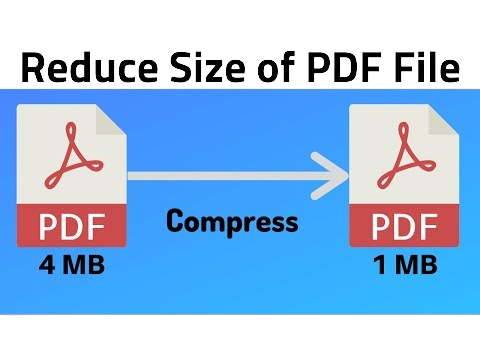Discounted Cash Flow Calculator
In the world of finance, making wise investment decisions is crucial for maximizing returns and minimizing risks. One popular method used by investors to assess the intrinsic value of an investment is the Discounted Cash Flow (DCF) analysis. DCF analysis helps determine the present value of future cash flows generated by an investment, allowing investors to make informed decisions about potential investments.
Discounted Cash Flow Calculator
In this comprehensive step-by-step guide, we will delve into the fundamentals of DCF analysis and provide a clear, easy-to-follow process to calculate the intrinsic value of an investment. Whether you are a seasoned investor looking to refine your valuation skills or a novice seeking to make your first investment, this article will equip you with the knowledge to make sound financial decisions.
Understanding Discounted Cash Flow
Discounted Cash Flow (DCF) is a financial valuation method used to estimate the intrinsic value of an investment based on its future cash flows. It is widely used in finance and investment analysis, guiding investors in making decisions about the potential worthiness of a particular investment.
The underlying principle of DCF is the concept of the time value of money, which states that a dollar today is worth more than a dollar received in the future. This is because money has the potential to earn returns or interest over time, and there is also the risk associated with receiving future cash flows. DCF takes into account the present value of these future cash flows and discounts them back to the present using a discount rate.
The DCF analysis involves several essential components:
-
Projected Cash Flows: The first step is to forecast the expected cash flows that an investment is likely to generate over a specific period. These cash flows typically include revenues, expenses, taxes, and capital expenditures. Projections are usually made for several years, and a terminal value is often estimated to capture cash flows beyond the projection period.
-
Discount Rate: The discount rate, also known as the required rate of return or cost of capital, reflects the opportunity cost and risk associated with the investment. It accounts for factors like inflation, interest rates, and the investment's level of risk. A higher-risk investment will have a higher discount rate, leading to a lower present value of future cash flows.
-
Terminal Value: Since most investments have cash flows that continue beyond the projected period, the terminal value estimates the investment's value at the end of the projection period. It captures the value of all cash flows beyond the projection period in one single value.
-
Present Value Calculation: Once the projected cash flows and terminal value are determined, each future cash flow is discounted back to the present using the discount rate. The present value of each cash flow is then summed to calculate the total present value of the investment.
-
Intrinsic Value: The sum of the present values of all projected cash flows and the terminal value represents the estimated intrinsic value of the investment. This value indicates what the investment is theoretically worth in today's dollars, assuming the projections and discount rate are accurate.
DCF analysis is commonly used for various types of investments, such as stocks, bonds, real estate, and business ventures. It helps investors compare different investment opportunities, make informed decisions, and assess whether an investment is undervalued or overvalued in the market.
It is essential to consider certain caveats and limitations while using DCF analysis. Predicting future cash flows can be challenging, and small changes in assumptions can lead to significant variations in the estimated intrinsic value. Additionally, DCF does not account for market sentiment or other qualitative factors that may influence an investment's value.
Despite its limitations, DCF remains a valuable tool for investors seeking to make well-informed decisions based on the fundamental financial characteristics of an investment. When used judiciously and in combination with other valuation methods, DCF analysis can provide valuable insights into the potential performance of an investment in the future.
Gathering Data
Gathering accurate and reliable data is a critical step in conducting a Discounted Cash Flow (DCF) analysis. The success of the valuation largely depends on the quality of the data used. Here are the key components to consider when gathering data for DCF analysis:
-
Historical Financial Statements: Begin by collecting historical financial statements of the company or asset you are evaluating. This includes income statements, balance sheets, and cash flow statements for at least the past three to five years. These statements provide valuable insights into the company's historical performance, profitability, and cash flow generation.
-
Projections and Forecasts: To perform a DCF analysis, you need to forecast future cash flows. Gather reliable projections for revenue, expenses, and capital expenditures over a specific projection period. Depending on the investment's nature, this period is typically five to ten years. Ensure that the projections are realistic, well-researched, and based on sound assumptions.
-
Capital Expenditures (CAPEX): CAPEX represents the investments made by the company to maintain or expand its business. Gather data on the company's historical CAPEX spending and consider how it may change in the future due to growth plans or industry trends.
-
Working Capital Changes: Changes in working capital, such as inventory, accounts receivable, and accounts payable, impact a company's cash flow. Gather information on historical working capital changes and consider their impact on future cash flows.
-
Discount Rate: The discount rate used in DCF analysis is a critical input. It represents the required rate of return or cost of capital expected by investors. Research market data and factors like the risk-free rate, market risk premium, and the company's beta (systematic risk) to determine an appropriate discount rate.
-
Terminal Value Estimation: To estimate the terminal value, consider the company's long-term growth prospects and its competitive position in the market. Use various methods, such as the perpetuity growth model or exit multiple approach, to estimate the terminal value.
-
Industry and Market Data: Understand the industry dynamics and gather relevant market data, such as growth rates, industry benchmarks, and market trends. This information will help you validate your assumptions and projections.
-
Economic and Macroeconomic Factors: Consider the impact of macroeconomic factors, such as interest rates, inflation rates, and overall economic conditions, on the investment's performance.
-
Risk Assessment: Identify and assess specific risks associated with the investment, such as market risk, operational risk, regulatory risk, and financial risk. Quantify the impact of these risks on the cash flows and discount rate.
-
Qualitative Factors: While DCF primarily relies on quantitative data, consider qualitative factors that may impact the investment's performance. These could include management quality, industry disruptions, technological advancements, and changes in consumer behavior.
Always ensure that the data used is up-to-date and accurate. Rely on reputable sources, financial statements audited by reliable firms, and market reports from established institutions.
Discounting Cash Flows
Once you have gathered the necessary data, it's time to perform the actual DCF analysis:
-
Calculate Free Cash Flows: Subtract capital expenditures (CAPEX) and working capital investments from the projected cash flows to obtain the free cash flows for each period.
-
Determine the Discount Factor: To discount the cash flows, use the discount rate determined earlier. Apply the discount rate to each free cash flow for all projected periods.
-
Calculate Present Value: Multiply the discounted cash flows with the corresponding discount factor for each period to obtain the present value of each cash flow.
-
Calculate Terminal Value: If using the perpetuity growth method, divide the last projected free cash flow by the discount rate minus the long-term growth rate. If using the exit multiple method, apply a suitable market multiple to the last projected cash flow.
-
Discount Terminal Value: Discount the terminal value back to its present value using the discount rate.
Summing Present Values
With the present values of the projected cash flows and the terminal value calculated, sum them up to obtain the total present value of the investment. Add the present values of all projected cash flows with the present value of the terminal value to arrive at the intrinsic value of the investment.
Sensitivity Analysis and Conclusion
It's essential to assess the sensitivity of your DCF analysis by varying key assumptions, such as the discount rate, growth rate, and projected cash flows. Sensitivity analysis will help you understand the impact of changing variables on the investment's value and make better-informed investment decisions.
In conclusion, the Discounted Cash Flow analysis is a powerful tool for valuing investments and making sound financial decisions. By following this step-by-step guide and conducting thorough research, investors can confidently assess the intrinsic value of an investment and take appropriate actions to achieve their financial goals. Remember, the DCF analysis is not without limitations and should be used alongside other valuation methods for a comprehensive investment evaluation. Happy investing!





.png)




